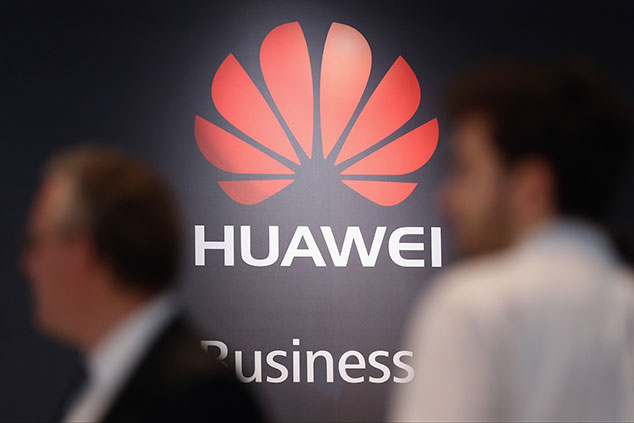
This article is taken from our FREE daily investment email Money Morning.
Every day, MoneyWeek’s executive editor John Stepek and guest contributors explain how current economic and political developments are affecting the markets and your wealth, and give you pointers on how you can profit.
Quick thing before I get started this morning – the MoneyWeek podcast is back this week after a brief but longer-than-hoped hiatus.
Merryn and I will be recording it tomorrow. If you have any questions you’d like us to answer, then please tweet me at @john_stepek or email editor@moneyweek.com with “Podcast question” in the subject line.
And yes, I know I’ve asked for questions before, but this week we’re definitely going to pick a few and answer them.
So get in touch!
Back to today’s topic – the ongoing trade war between China and the US has just heated up another notch.
Why the focus on Huawei?
It’s becoming clear that the battle between China and the US is not so much about tariffs as about tech.
Last week, US president Donald Trump put Chinese telecoms group Huawei on a blacklist. It effectively bans the company from selling technology into the US market, and stops it from buying chips from US suppliers.
As a result, Google said that it would stop Huawei from accessing its Android software. That’s something of a blow for a company that’s the second-largest smartphone maker in the world. (If you have a Huawei phone then apparently you don’t have to worry for now, but in the longer run it could be a headache depending on what happens).
The ban has been suspended for three months – in Trump’s typical “act first, pause for contemplation afterwards” manner – but that’s mostly to give companies in the US time to adjust.
Why the focus on Huawei? The Chinese company is in the lead on developing 5G. That’s the next step in telecoms networks, enabling the faster processing and transmission of ever increasing amounts of data.
The fear in Washington is that Huawei has close ties to the Chinese military, and thus it’s dangerous to have the global communications network dependent on its technology.
I’m not on top of what’s going on in the spy business, but it hardly sounds unlikely given what we know of China (ie, that it’s a dictatorship with no respect for intellectual property rights). Of course, this has also been blatantly obvious for a long time – as with all of these things, it only matters when someone with power decides to make it matter.
As Paul Triolo of Eurasia Group put it to the FT: “The US has basically openly declared it is willing to engage in a full-fledged technology war with China.”
This is bad news for semiconductor stocks
So what does that mean? It’s not good news for microchip manufacturers, which is why the semiconductor sector has seen its share prices plunge hard. The sector has slid by about 15% (albeit from close to a record high) in the past month or so.
To be clear, the sector was already undergoing a cyclical downturn. Making chips for computers is a boom and bust industry for a wide range of reasons.
There’s the fact that customers upgrade their equipment in fits and starts. Take smartphones. Most people who want or need one have one now. New generation smartphones struggle to innovate much over older generation ones. That means the product replacement cycle slows down.
The number of people willing to shell out more than £1,000 or $1,000 for a phone that’s a bit flashier than their most recent model is far smaller than those who were once willing to spend a few hundred to get a much better phone than their previous generation model.
On top of that, the bitcoin boom and bust had a major effect on demand for chips. In effect, bitcoin miners drove demand for high-end microchips (primarily designed for heavy-duty computer gaming) to do the complex calculations needed to add more bitcoins to the blockchain. When bitcoin crashed back in late 2017, demand for the chips crashed too, as the profitability of mining collapsed.
So trade volumes were already being hit hard by this cyclical downturn. Indeed, the semiconductor sector – rather than tariff threats – has been largely behind the big drop in trade volumes seen in the last six months or so.
Things might get even stickier for semiconductor stocks now. But what about the wider market? China expert Diana Choyleva of Enodo Economics reckons that China and the US will still come to a deal – but she’s less sure than she was.
And even if a deal is reached on tariffs in the longer run, she notes, “Sino-US tensions have become a permanent feature of the investment landscape and strategic competition between Washington and Beijing will have far-reaching implications for markets – we’re likely to see a big rise in equity risk premiums and a return of cost-push inflation.”
What does that mean? Put simply, investors will demand bigger returns for buying equities, which means that share prices likely have to fall. As for inflation – if it becomes harder for companies to use Chinese labour, and harder to import Chinese goods, then logically, costs and prices will rise.
Globalisation was disinflationary. A pause or reversal in the process will be inflationary. It’s just a matter of time.